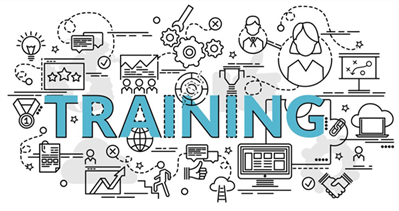Содержание
For example, the seven-member executive team at Whole Foods spends time together outside of work. Its members frequently socialize and even take group vacations. According to co-CEO John Mackey, they have developed a high degree of trust that results in better communication and a willingness to work out problems and disagreements when they occur. According to our Project Management Statistics 2021, an astonishing 92% of people believe that collaboration with their teammates could be improved. From a profitability point of view, it can also help to track the time spent on your projects.

This stage is marked with turmoil and interpersonal conflict as group dynamics are established and members compete for their ideas to be heard. Of the five stages of group development, the forming stage requires the most meetings. Team members need frequent direction and feedback, so you should anticipate a lot of meetings between members and leadership. How did you know what behaviors were acceptable or what level of performance was required? Teams usually develop norms that guide the activities of team members.
Stage Three Of Team Development: Norming Stage
For many, membership in such a group can be a buffer against stress, which can improve mental and physical well-being. Because members are invested in the group and its work, they are more likely to regularly attend and actively participate in the group, taking more responsibility for the group’s functioning. In addition, members can draw on the strength of the group to persevere through challenging situations that might otherwise be too hard to tackle alone.
Teams collectively work to solve problems and get the job done without the need for outside supervision or unnecessary conflict. The team is focused, effective, and achieves extraordinary results. There is a collaborative environment in which team members use their resources most efficiently. Team leaders focus more on strategy as well as communicating successes and areas of opportunity because the team takes on the responsibility of decision making.

Supervisors of the team during this phase are almost always participating. Even the most high-performing teams will revert to earlier stages in certain circumstances. Many long-standing teams go through these cycles many times as they react to changing circumstances. For example, a change in leadership may cause the team to revert to storming as the new people challenge the existing norms and dynamics of the team.
How To Make Adjourning Run Smoothly
At this time, he proposed four stages of team development that he believed necessary in order for a team to grow, tackle problems, find solutions, and deliver results. It is during this process that conversations, when conducted in an open and receptive manner, can become the seed for a longer term improvement of the relationship. As Tuckman established, it is the quality of the relationships between the members of the group that makes its communication and decision-making effective. The more and better the trusting relationships, the higher the performance of the group. In contrast, in a facilitated environment, the members of the group do not necessarily have to trust each other prior to the meeting . It is the facilitator who needs the participants to trust him or her, so they can trust the process that has been designed.
Tips on creating and leading high-performing teams – Reliable Plant Magazine
Tips on creating and leading high-performing teams.
Posted: Tue, 29 May 2018 08:27:09 GMT [source]
A catalyst accelerates what could take much more time in a regular environment. As a catalyst, the facilitator changes the way participants interact with each other and with their leader . Facilitation increases the speed of interactions, idea generation and collaboration.
Activities For The Different Stages Of Group Development
If there are any hidden agendas, they will typically be exposed as team members solidify team norms. Decisions are made through consensus building and negotiation. Group facilitation generates conditions similar to the behaviours, social context and practices of high-performance teams.

This stage of team development is crucial and it is suggested that teams in the forming stage participate in team-building activities . The below list is a non-exhaustive list of behaviors and outcomes that characterize this phase and which high performing team’s generally complete. The forming phase of team building can be a bit stressful for the team members, but is very important in laying a strong foundation for future teamwork.
Everyone Must Contribute And Participate In Team Meetings
Alternatively, a working group may dissolve due to an organizational restructuring. For those who like routine and bond closely with fellow group members, this transition can be particularly challenging. Group leaders and members alike should be sensitive to handling these endings respectfully and compassionately. An ideal way to close a group is to set aside time to debrief (“How did it all go? What did we learn?”), acknowledge each other, and celebrate a job well done.
This stage focuses primarily on understanding and developing relationships between team members. Thus, it is unlikely for the team to be highly productive at this stage. As the group becomes more acquainted, positions and duties will emerge.
Group development also provides the team with a chance to learn about the rest of the team’s talents which contributes to the team dynamics. The five stages of group development are critical because it ensures that all the team members are working together to achieve the project’s goal. The emphasis is on building a team that will flourish and helps the organization to achieve long-term success. During https://globalcloudteam.com/ the storming stage, conflict emerges as group members begin to perform their various roles, have their ideas heard, and negotiate where they fit in the group’s structure. Conflict is inevitable and important as a part of group development and can be productive if it is managed properly. The storming stage of group development is one of the most critical stages, but it’s also the most dreaded.
The Power Of Facilitation On Group Trust And Team Building
However, this project management tool doesn’t provide users with milestones and customization choices. Users cannot specify an estimated timeline for a work to be completed or assign the work to multiple users. Is an award-winning work management software used for real-time collaboration, planning and monitoring projects, and automating reports.
- As the work load is diminished, individual members may be reassigned to other teams, and the team disbands.
- Although Tuckman’s stages of group development were first written about in 1965, they remain a useful tool even today in learning what creates high-performing teams.
- The below list is a non-exhaustive list of behaviors and outcomes that characterize this phase and which high performing team’s generally complete.
- But as you spend more extra time with the person, you start discovering that they’re not.
- Because members are invested in the group and its work, they are more likely to regularly attend and actively participate in the group, taking more responsibility for the group’s functioning.
- However, this project management tool doesn’t provide users with milestones and customization choices.
- The team will also be developing trust – helping each other and asking for help, and many teams are socialising with each other by this stage.
Our attachment to old habits and work structures limits the capability of most groups to work together effectively. Even within the same organization, groups working under similar if not identical conditions can have significant variation in performance. Rickards and Moger proposed a similar extension to the Tuckman model when a group breaks out of its norms, through a process of creative problem-solving. A group’s perception of its ability to successfully perform well. Groups with high cohesion and high task commitment tend to be the most effective. In addition, research shows that cohesion leads to acceptance of group norms.
Hopefully the cycle is shorter the next time around, especially if team members are aware. And a good leader watches for these shifts in order to step in and support the team back to higher levels of group functioning. In addition, the leader may need to step into a more directive role to ensure the team remains professional, and resolves conflict in a non-judgemental and healthy way.
We Built A Way To Take Our Time Back
To understand how a facilitator does this, we can equate the facilitator as a catalyst. I believe this is a critical differentiator of a professional group process facilitator from other experts. For the first time in my life I felt lost, unqualified, but no one sensed my confusion.
Everyone starts to realize the deliverables and tasks at hand that they must deliver before the deadline. The initial enthusiasm and urge to be courteous have most likely gone off. Once the team members become familiar with each other, it is almost similar to being in a relationship.
This is also an important time to meet with team members, provide feedback, and discuss next steps. In the forming stage, members feel unsure of their status on the team, and increasingly look to the leader for guidance. Little to no risk is taken, as group members value acceptance and stability over innovation.
A high-functioning team does not happen effortlessly during the performance stage. The team members need to go through the forming, storming, and norming stage before getting to that level. Putting a group of talented people together does not guarantee success too. The performing stage is when your team is truly interdependent.
Stage, participants are not only getting the work done, but they also pay greater attention to how they are doing it. They ask questions like, “Do our operating procedures best support productivity and quality assurance? Do we have suitable means for addressing differences that arise so we can preempt destructive conflicts? Are we relating to and communicating with each other in ways that enhance group dynamics and help us achieve our goals?
How can I further develop as a person to become more effective? ” By now, the group has matured, becoming more competent, autonomous, and insightful. Group leaders can finally move into coaching roles and help members grow in skill and leadership. The storming stage is like the teenage phase during the forming stage of a group or team, the leader should of group development – boundaries are tested, and arguments are inevitable. In this stage, individual members vie for leadership roles while others chafe at their team members giving them direction. Cliques and subgroups start to form, and members value competition more than collaboration.
